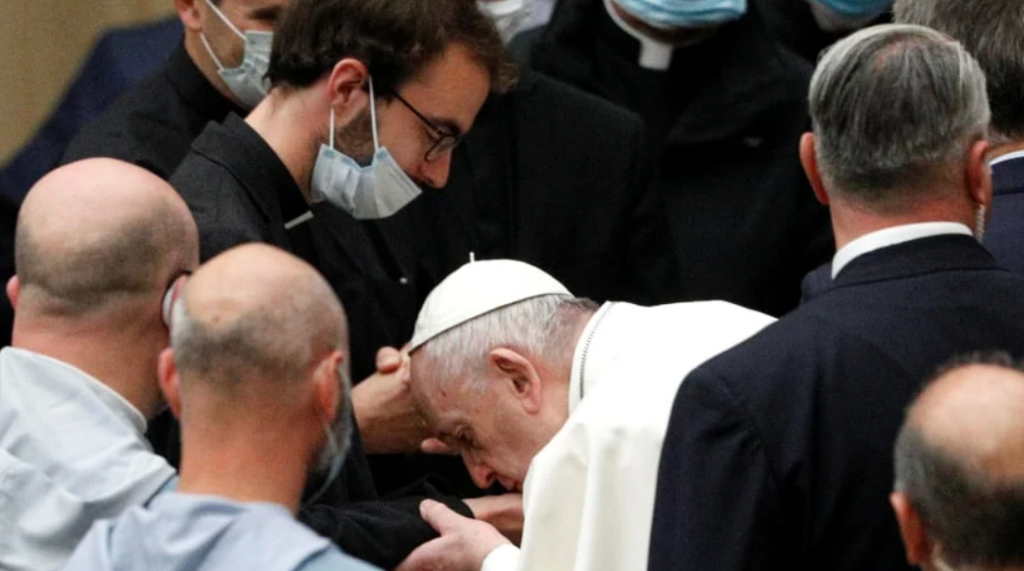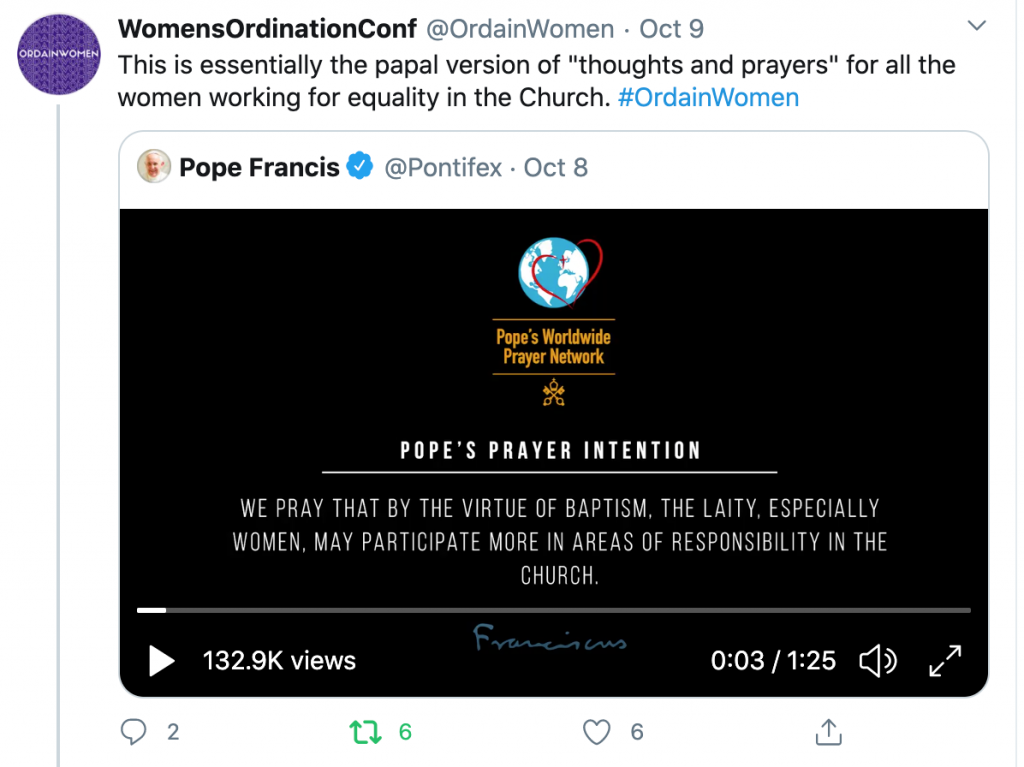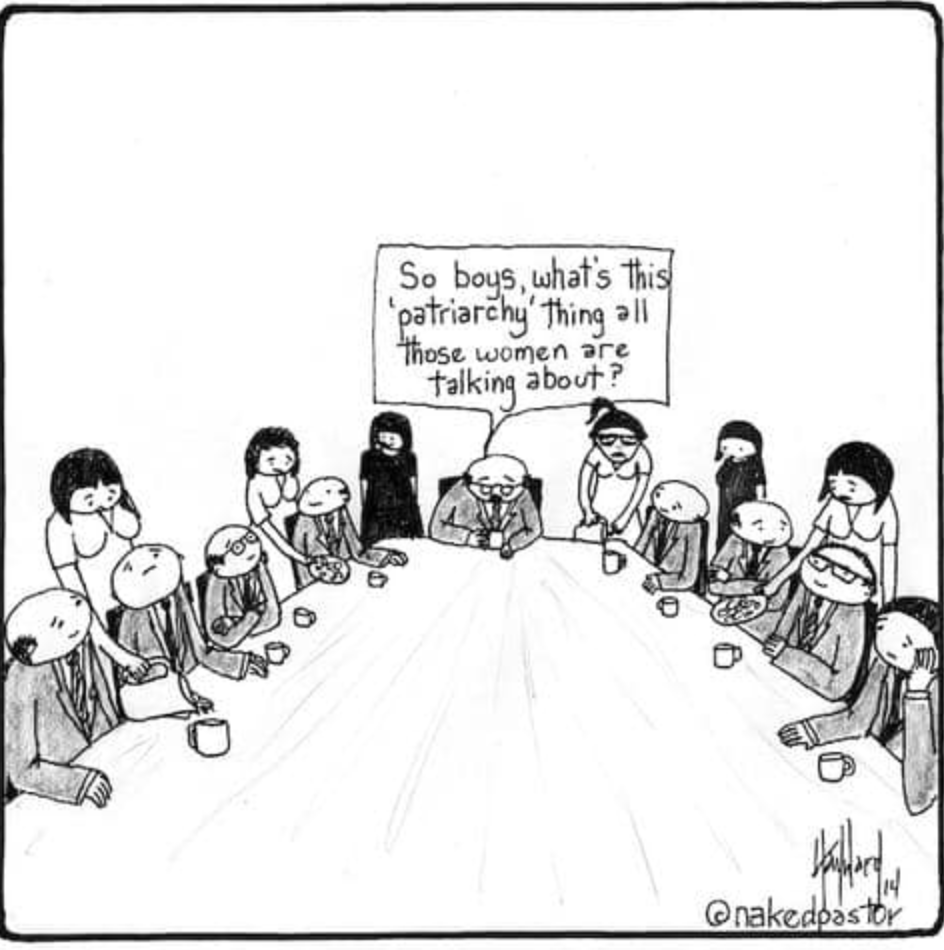Masculinity
Do you expect a Franciscan theologian to address toxic masculinity in an article in the National Catholic Reporter? Dan Horan did that this week, writing about President Trump’s failed responses to the corona virus pandemic, personally as well as politically. Horan notes that it was only in 2018 that the American Psychological Association issued “guidelines dealing specifically with boys and men because, until recently, maleness was simply, if errantly, considered the norm.” Really?
Kate Manne writes in the Washington Post, quoted by Horan: “This hyper-masculine worldview holds that any change in our behavior, any restriction on normal activity — no matter how beneficial and rooted in scientific evidence — constitutes an unacceptable ‘retreat.’ Taking precautions against catching or transmitting a potentially lethal disease somehow means that we have allowed the virus to win.” Change that to “scriptural evidence” and you’ll get a clue to where I’m going with this.
Horan goes on to say, “It is understandable that an elderly man like Trump, who is 74 and was reared at a time in which there were few models for socially acceptable masculinity, would have grown up with an internalized pressure to appear ‘tough’ and ‘strong’ at all costs.”
Manne goes on to say, “According to this ideology, mask-wearing — and perhaps all forms of caring for other people — is feminine, and hence a contemptible quality in a man.”

Guglielmo Mangiapane/Reuters via Daily Beast
Now, the reason I am starting with the above is that Robert Mickens in La Croix International wrote something similar twice in recent weeks. He does not blame the behavior he’s concerned about on toxic masculinity: “Francis’ refusal to wear a facemask and keep proper distance from people at this time of pandemic is extremely troubling. Not only is he setting a very bad example for all those who look to him for guidance, but he is also putting his health and that of others in danger.”
Mickens describes many instances when the Pope has been “reckless” and “irresponsible.” He finds Vatican employees who are “horrified,” in part because of the strict guidelines they have to follow. He quotes a colleague who thinks that those who support Francis also support facemasks and are reluctant to criticize; those critical of Francis don’t believe in facemasks and aren’t going to pick on him for that.
Colleen Dulle in an “explainer” in America provides similar examples, and concludes: “Early in his pontificate, the pope decided to forgo riding in a bulletproof car to greet crowds in favor of a more open vehicle, saying, ‘I know that something could happen to me, but it’s in the hands of God.’”
We all know that Pope Francis frequently exercises that feminine trait of caring about people, but he’s ten years older than Trump and reared in a culture that values machismo. Is his risk-taking admirable or problematic?
At least he is aware of a related issue: how this church treats women. The latest indication is Francis’ special prayer intention for October. In a highly-produced video recorded for the Pope’s Worldwide Prayer Network, he speaks in Spanish with English subtitles: “Today, it is especially necessary to create broader opportunities for a more incisive female presence in the Church.” I especially like “incisive.” As reported by La Croix International, Francis also stresses the need to “promote the integration of women, especially where important decisions are made.”
All well and good, except that something the article does not mention is that the frame of the Pope’s argument is women’s status as lay people. Francis begins with a statement that all Catholics, priests and bishops as well, start out as lay people by virtue of their baptism, and concludes with a statement that women’s increased participation should not lead to clericalism. I’m not sure what the prayer intention actually is, because Francis does not have to pray for God to do the things he states; he has to do them himself.

One of those pictured in the video and noted in the article is Francesca Di Giovanni, Under-Secretary in the Vatican Secretariat of State’s Section for Relations with States. Recently, she spoke at the UN’s celebration of the 25th anniversary of the 1995 Beijing conference on women. La Croix’s reporting emphasizes her list of grave problems confronting women worldwide, but concludes with Hillary Clinton’s formulation of what that meeting was about: “women’s rights are human rights.” Read over the Beijing Declaration and see what DiGiovanni left out.
This month US Catholic has resurrected St. Joseph Sister Christine Schenk’s 2012 article on Cardinal Newman, which references another series of meetings at about the same time. The bishops of the United States were preparing to write a pastoral on women, and asked women in every diocese to convene to provide input. What a concept, perhaps borrowed from Newman’s non-masculinist theology of consulting the faithful, as Schenk suggests.
Schenk summarizes the first draft of the pastoral: “The April 1988 draft included women’s voices of both affirmation and alienation. While acknowledging that the male priesthood was ‘an unbroken tradition’ in Catholicism, the draft suggested that continuing reflection and dialogue on the topic would be valuable. It also asked for examination of opening the diaconate to women.”
This was not the final draft, however. Again, from Schenk: “Nine years after the project had started, and after steady opposition from the Congregation for the Doctrine of the Faith headed by then-Cardinal Joseph Ratzinger, the final draft of the women’s pastoral had deleted women’s voices altogether, replacing them with voices from the Vatican stating that Jesus deliberately chose to exclude women from the priesthood by selecting only males as apostles.
“To their everlasting credit, on November 19, 1992, for the first time in their history, the U.S. bishops’ conference failed to muster the two-thirds majority needed to approve the final draft of the pastoral.
“Two years later St. Pope John Paul II issued Ordinatio Sacerdotalis proclaiming that the ordinary and universal magisterium taught that women couldn’t be priests.”
Such a toxic trajectory has not discouraged Schenk and should not discourage us. Women’s voices are heard now more than ever, and ordination to priesthood and diaconate is frequently discussed, even in the Vatican.
Another article translated from the Spanish in Open Democracy provides a superb example of women not crushed by masculinity. Colombian theologian Isabel Corpas de Posada reflects on actions from St. Paul through Paul VI to the Amazon synod and a recent strike of Mexican women theologians. Her long interview with José Zepeda is well worth reading.

Corpas concludes with this reflection on men in the church: “It’s just that they have a hard time accepting a woman as a dialogue partner when they have been used to being what is usually called the teaching church and the obedient truth church. The fact that we can speak as equals alters them. They are not prepared for that. Now there are not only fears, misgivings, and even rejection among theologians, but also among female theologians, because there are some who feel that things are fine like that…And changes only occur when one recognizes that things are not right as they are.”
Things are not right as they are. We can pray for an end to a masculinity that does not always present as toxic, at least according to the many descriptions Horan provides in his article. Yet it is a hidden toxicity and it affects the rights of women, the opportunities for women, the souls of women. Yes, things are not right as they are.

One Response
Icons of Christ
A Biblical and Systematic Theology for Women’s Ordination
William G. Witt, Baylor University Press, November 2020
https://www.baylorpress.com/9781481313186/icons-of-christ/